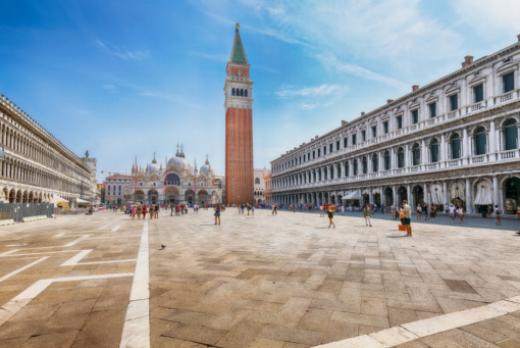Nestled in the lagoon of Venice lies the hidden gem of Sant'Erasmo, a charming island known for its lush greenery, sustainable farming practices, and unique role in preserving the biodiversity of the region. Often referred to as Venice's secret garden, Sant'Erasmo offers visitors a taste of the city's rich culinary tradition, while also serving as a vital agricultural haven for the local community. Join us as we explore the delights of Sant'Erasmo and discover the importance of this picturesque island in Venice's ecosystem.

The Culinary Delights of Sant'Erasmo: A Taste of Venice's Secret Garden
Nestled in the heart of the Venetian Lagoon lies the picturesque island of Sant'Erasmo, often referred to as Venice's secret garden. While the bustling streets of Venice are known for their charm and history, Sant'Erasmo offers a tranquil escape from the crowds, where visitors can immerse themselves in the island's rich agricultural heritage and savor the culinary delights it has to offer.
Sant'Erasmo is renowned for its fertile soil, which has been cultivated for centuries by local farmers who continue to use sustainable farming practices to this day. The island's lush fields yield an abundance of fresh produce, including artichokes, asparagus, and the famous purple onions of Sant'Erasmo. Visitors can sample these seasonal delicacies at the island's local markets or dine at one of the charming farm-to-table restaurants that showcase the bounty of Sant'Erasmo.
One of the highlights of a visit to Sant'Erasmo is the opportunity to taste the island's renowned violet artichokes, which are prized for their tender hearts and delicate flavor. These artichokes can be savored in a variety of dishes, from simple grilled artichokes to creamy artichoke risottos, providing a true taste of Venetian cuisine.
In addition to its fresh produce, Sant'Erasmo is also known for its vineyards, which produce delicious wines that pair perfectly with the island's farm-fresh dishes. Visitors can enjoy a leisurely wine tasting while taking in the stunning views of the Venetian Lagoon, creating a truly unforgettable culinary experience.
Overall, a visit to Sant'Erasmo offers a unique opportunity to immerse oneself in the flavors of Venice's secret garden, where sustainable farming practices and a dedication to preserving biodiversity have created a culinary paradise unlike any other.
Sustainable Farming Practices on Sant'Erasmo Island
Sant'Erasmo Island, located in the Venetian Lagoon, is not only a picturesque and tranquil escape from the hustle and bustle of Venice, but also a hub for sustainable farming practices. The island's fertile soil and mild climate make it the perfect environment for cultivating a variety of crops, including artichokes, asparagus, and melons.
Local farmers on Sant'Erasmo have been practicing sustainable agriculture for centuries, using traditional methods that respect the land and minimize environmental impact. These practices include crop rotation, intercropping, and the use of natural fertilizers such as compost and manure. By avoiding chemical pesticides and herbicides, farmers on the island are able to protect the delicate ecosystem of the Venetian Lagoon and ensure the long-term health of the soil.
In addition to growing fruits and vegetables, Sant'Erasmo is also known for its vineyards and olive groves, which produce high-quality wine and olive oil. These products are not only delicious, but also sustainable, as the farmers on the island prioritize organic and biodynamic farming practices that promote biodiversity and soil health.
By supporting the farmers of Sant'Erasmo and enjoying the fruits of their labor, visitors to the island can experience a true taste of Venice's secret garden while also contributing to the preservation of this unique and ecologically important ecosystem.
Preserving Biodiversity: The Role of Sant'Erasmo in Venice's Ecosystem
As the largest island in the Venetian lagoon, Sant'Erasmo is a haven for a variety of plant and animal species that are essential to the overall health of the region's environment. The island's fertile soil and unique microclimate have enabled a wide range of flora and fauna to thrive, contributing to the rich biodiversity of the area.
One of the key features of Sant'Erasmo that supports biodiversity is its sustainable farming practices. The local farmers on the island have long been committed to organic farming methods, eschewing the use of chemical pesticides and fertilizers that can harm the delicate balance of the ecosystem. By practicing crop rotation, using natural fertilizers, and employing traditional farming techniques, the farmers of Sant'Erasmo help to maintain the diversity of plant species on the island and prevent the degradation of the soil.
Additionally, Sant'Erasmo serves as a crucial habitat for a number of bird species, including herons, egrets, and ducks. The marshlands and wetlands on the island provide a safe haven for these birds to nest and feed, contributing to the overall biodiversity of the Venetian lagoon. By protecting these natural habitats and ensuring the health of the ecosystem, Sant'Erasmo plays a vital role in the conservation of Venice's diverse wildlife.
In conclusion, Sant'Erasmo Island's commitment to sustainable farming practices and preservation of natural habitats is essential for maintaining the biodiversity of Venice's ecosystem. By serving as a refuge for a wide range of plant and animal species, the island helps to support the health and balance of the region's environment. As we continue to face challenges in protecting our planet's biodiversity, the example set by Sant'Erasmo serves as a model for sustainable practices that can benefit ecosystems around the world.
